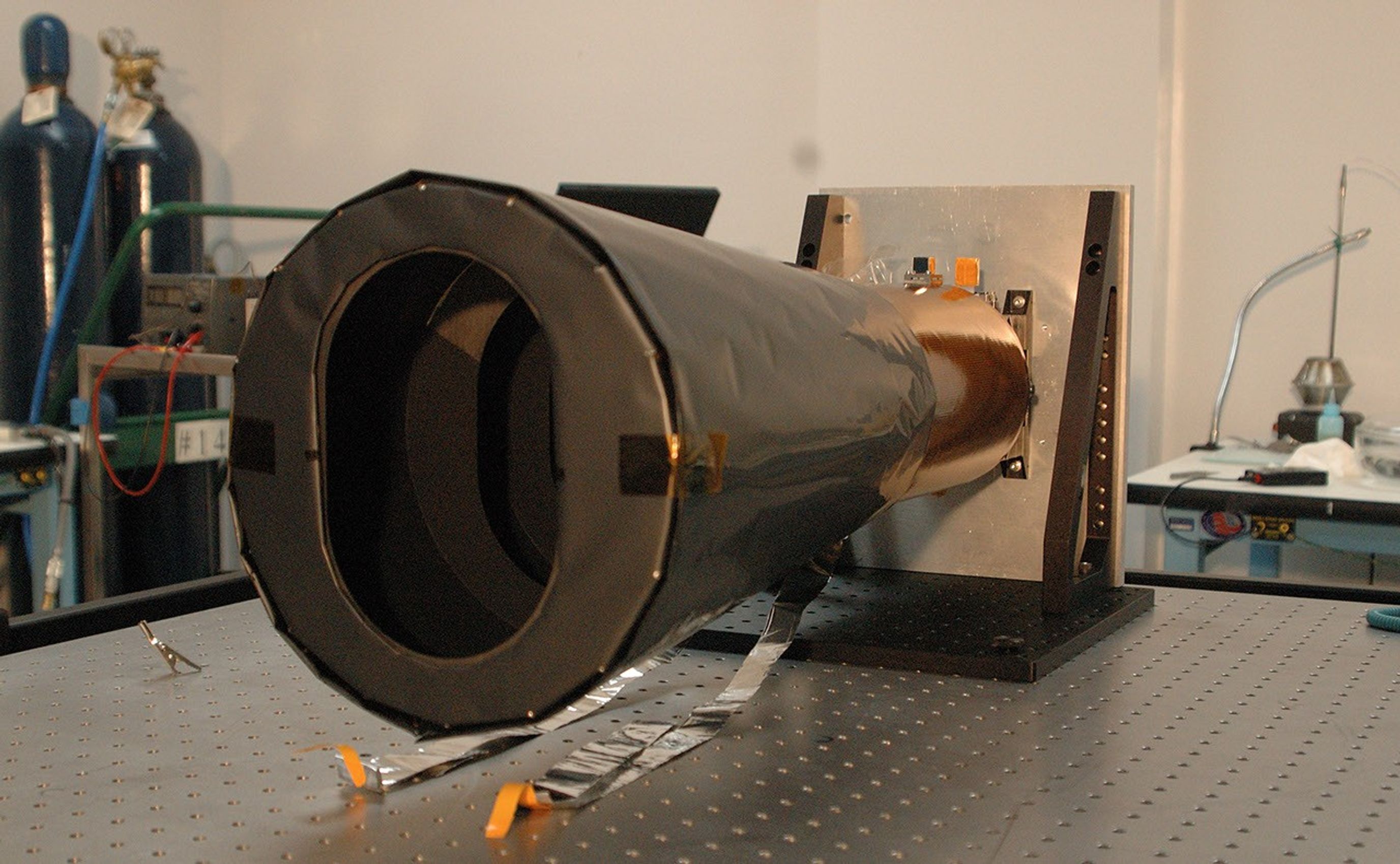Context Camera for Mars Reconnaissance Orbiter
| Credit | NASA/JPL-Caltech |
|---|---|
| Language |
|
The Context Camera (CTX) will make observations simultaneously with the high-resolution images collected by the High Resolution Imaging Science Experiment (HiRISE) and data collected by the mineral-finding Compact Reconnaissance Imaging Spectrometer for Mars (CRISM).
As its name suggests, CTX will provide the wider context for the data collected by the other two instruments. Its resolution may not be as great, but it provides a picture over a broader area. Scientists will examine details of rocks and mineral fields with the other instruments, but CTX will provide a bigger-picture view of the terrain in which they occur.
Together HiRISE, CRISM, and CTX will provide an extremely powerful tool set. For example, many of the layered terrains observed by the Mars Orbital Camera on the Mars Global Surveyor spacecraft could be water-deposited sediments. However, they could also be layers of volcanic lavas or ash, or wind-deposited sediments. By combining information on any small-scale layers observed by HiRISE, the geologic context from CTX, and the mineralogical information derived from CRISM, it should be possible to distinguish between these possibilities.
From 400 kilometers (250 miles) above Mars, CTX will take images of terrain that span 40 kilometers (25 miles) across. The camera will have a resolution of 8 meters per pixel.
The team lead and supplier of CTX is Mike Malin from Malin Space Science Systems.






























